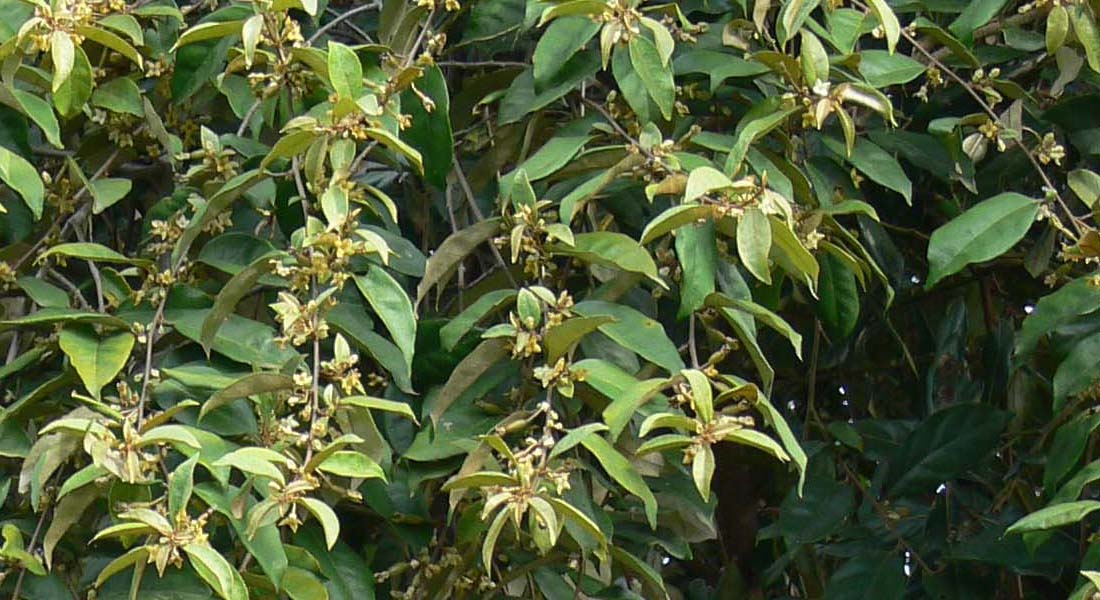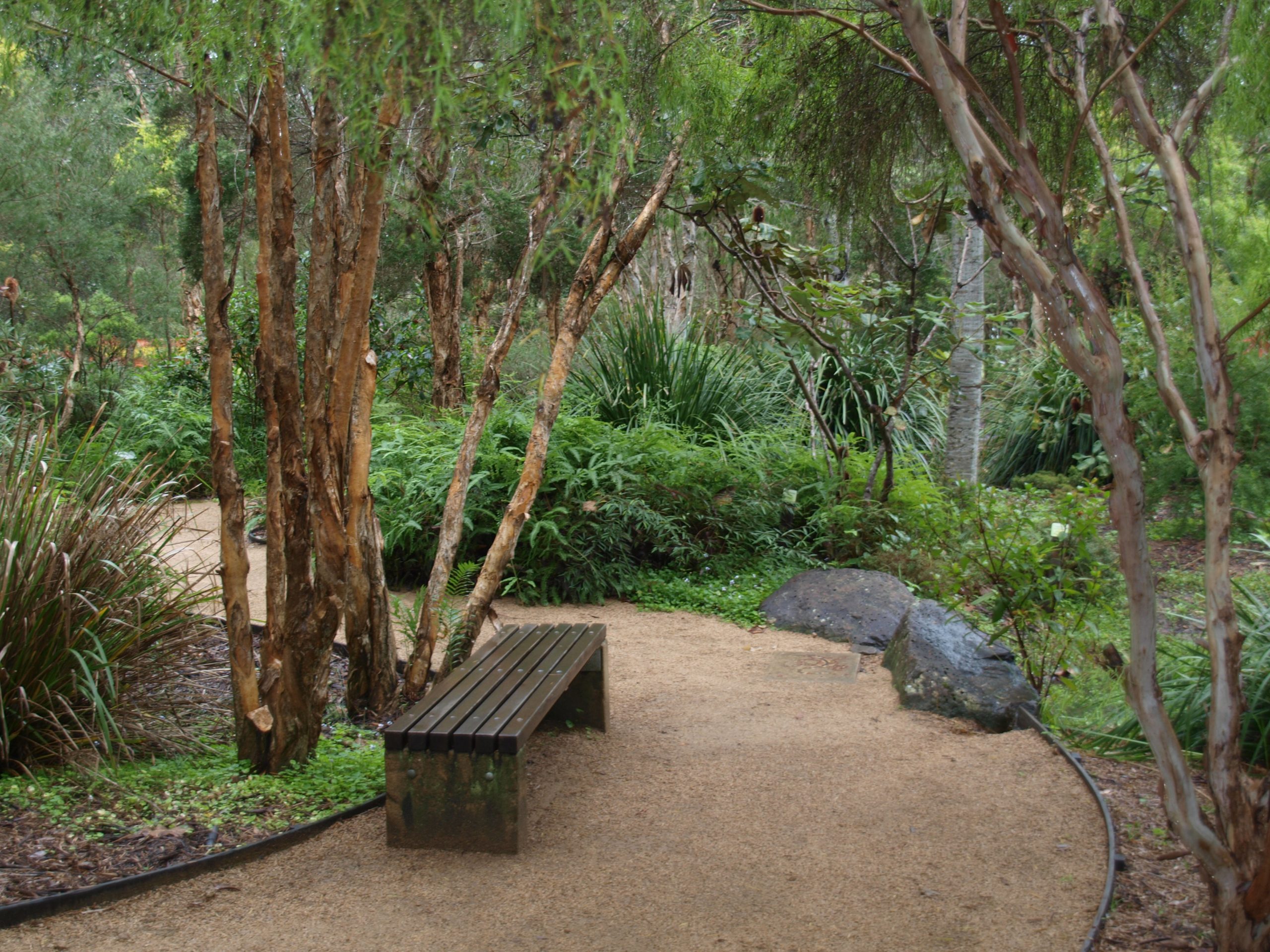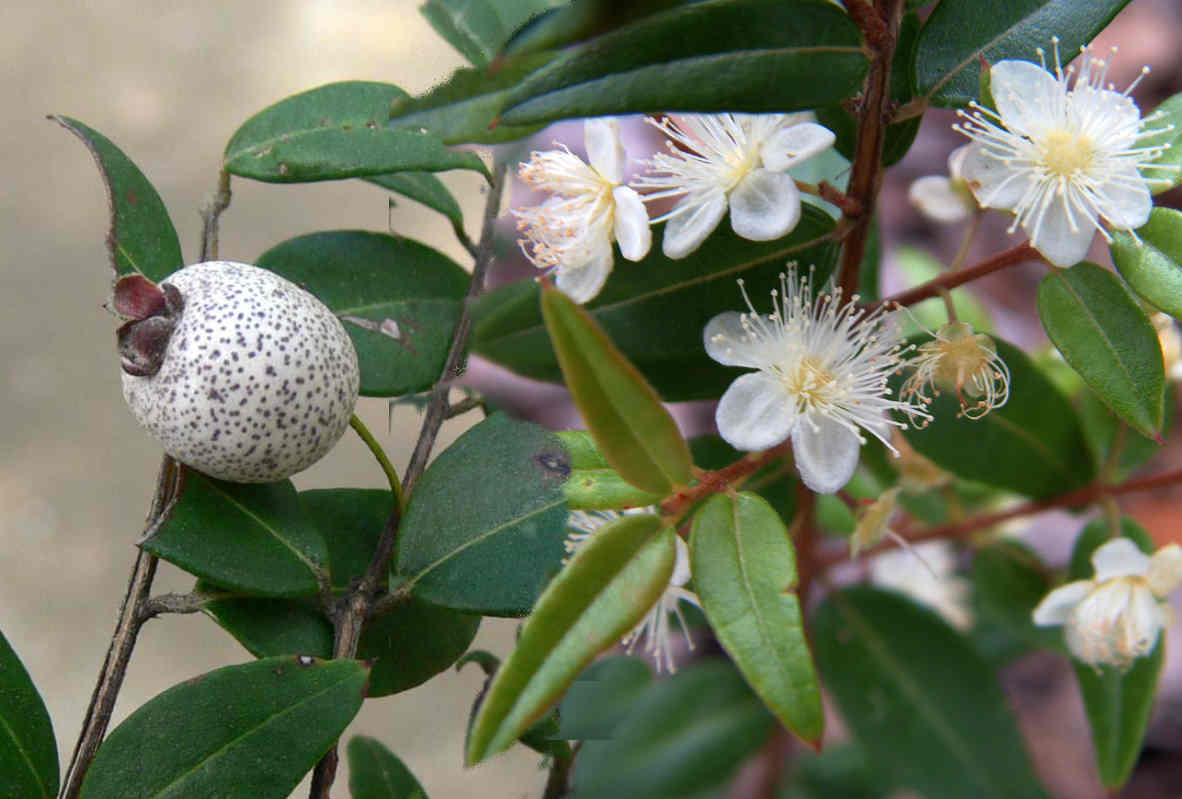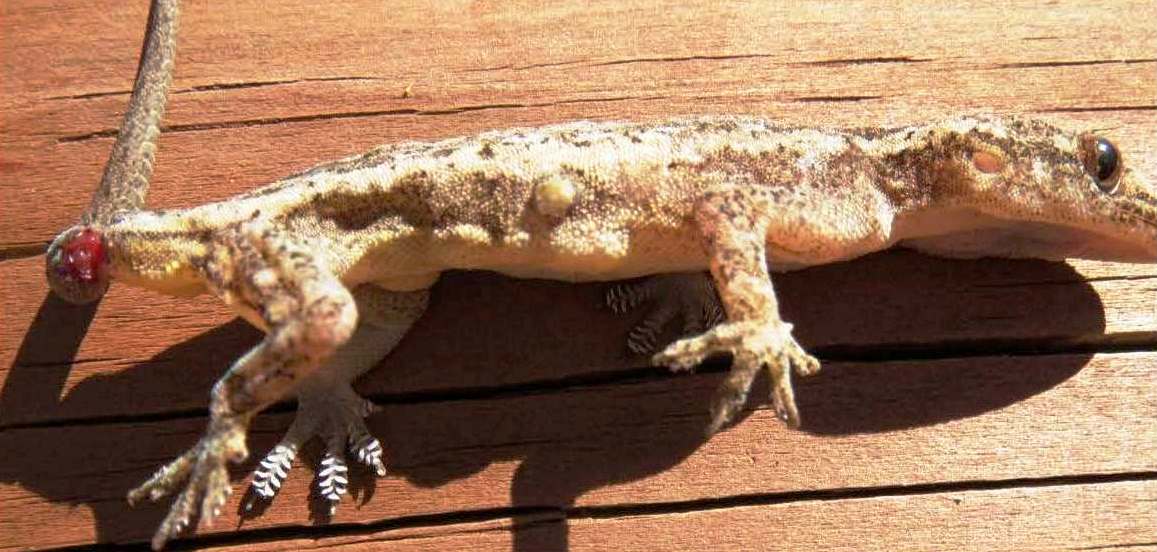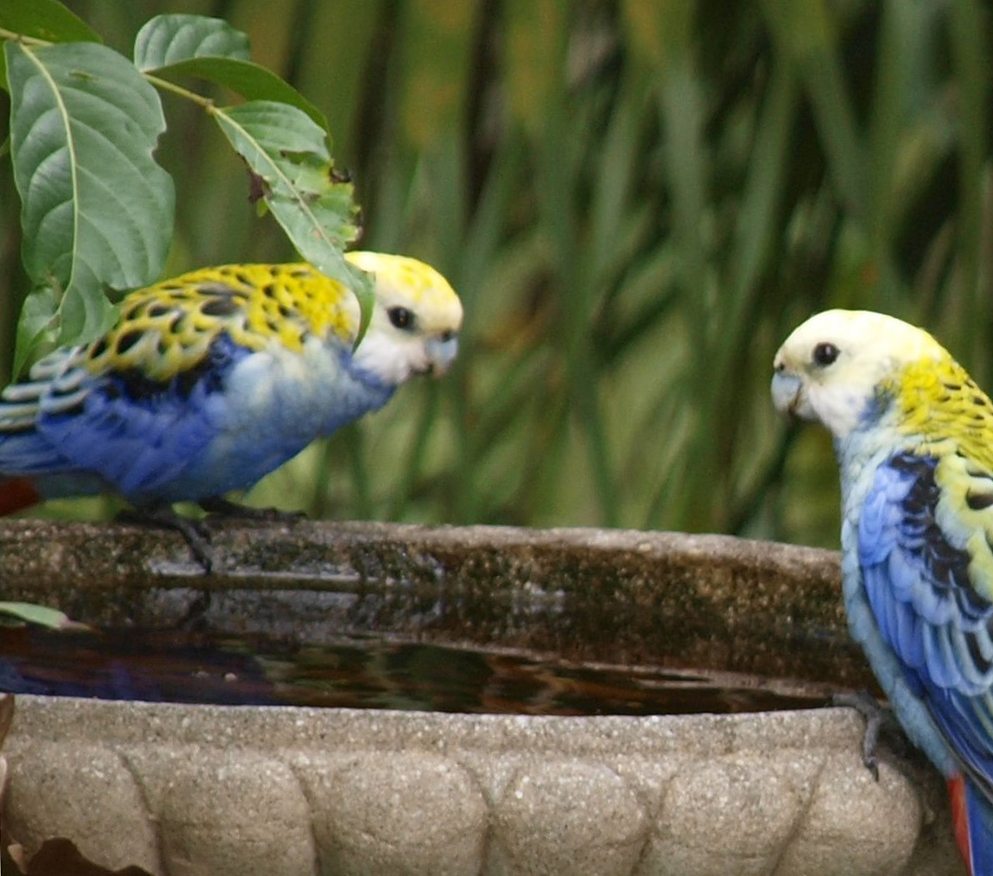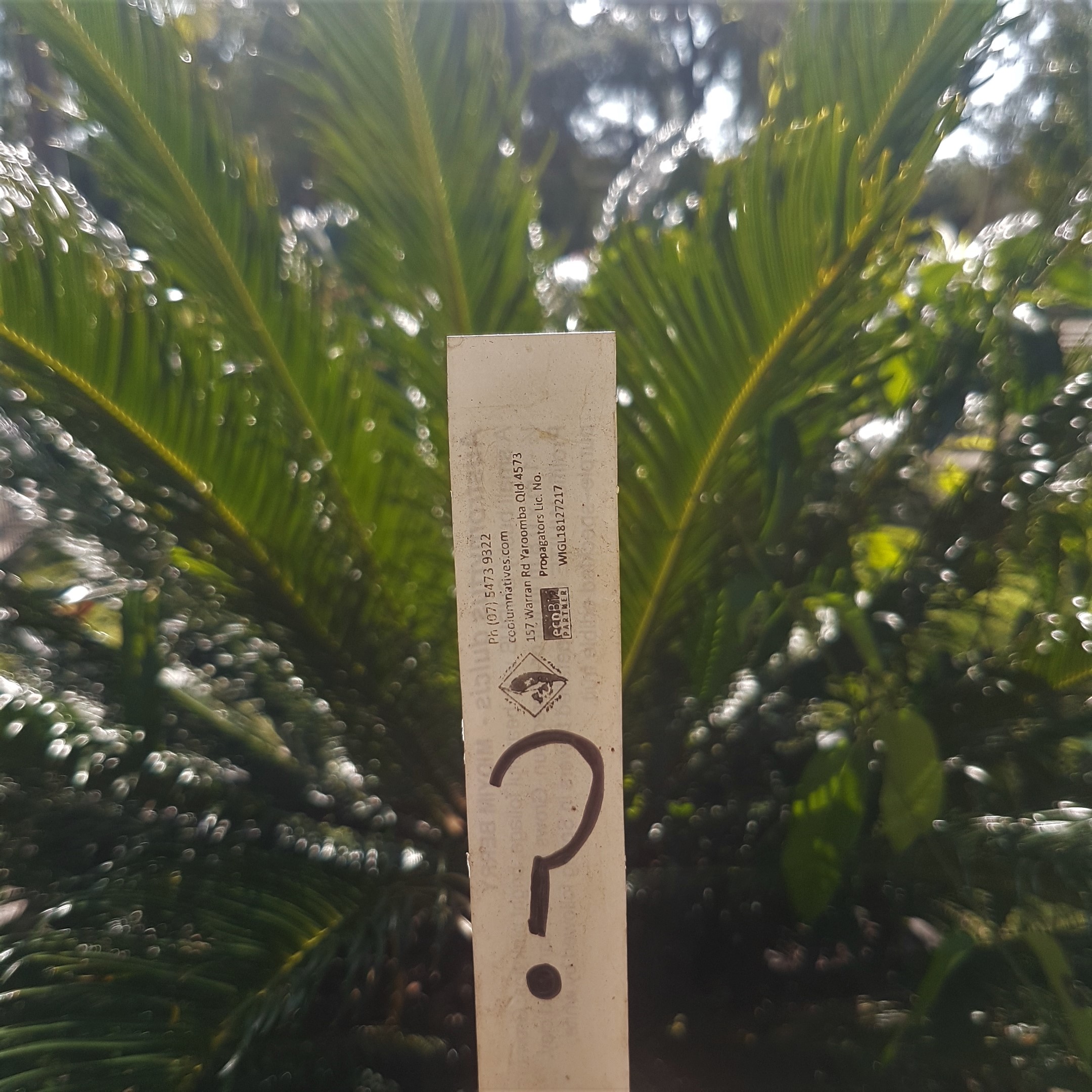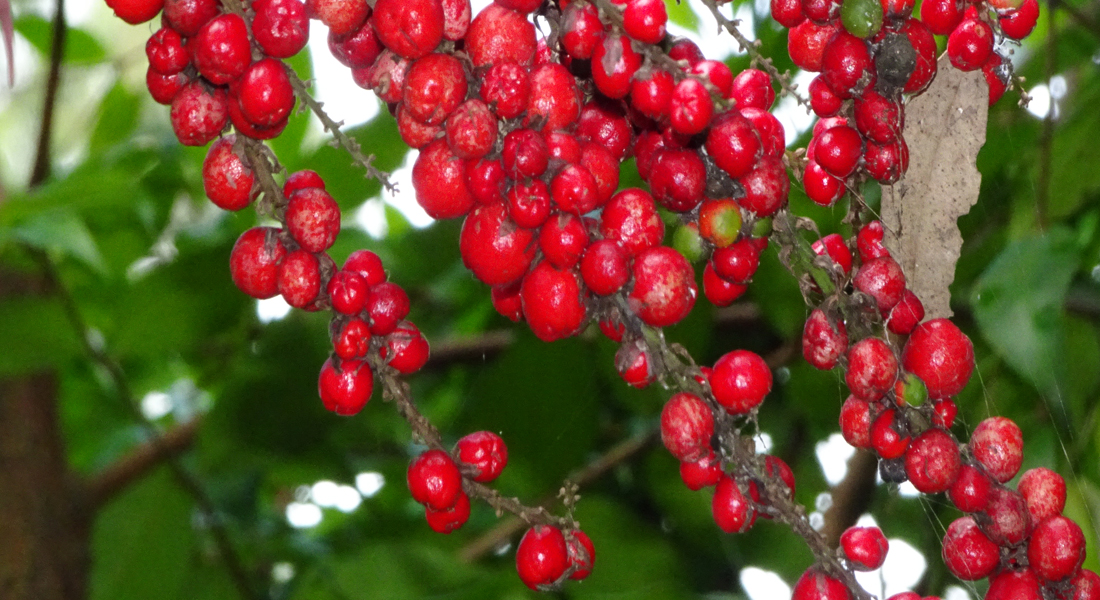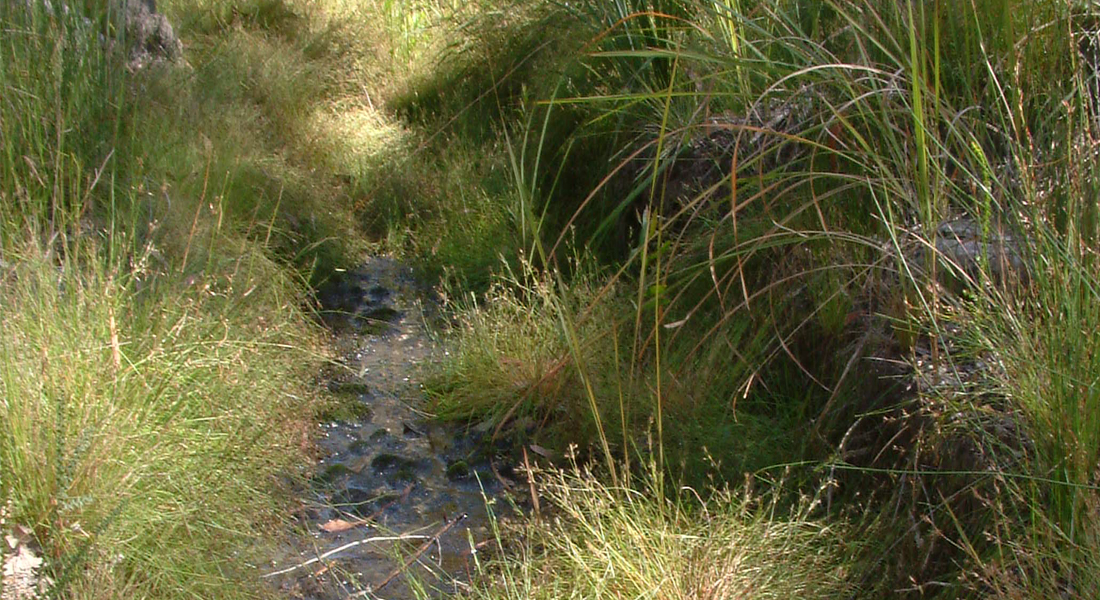Millaa Millaa Vine
Describing Eleagnus triflorus as a gangly, sprawling, caney shrub would be accurate, but doesn't do it justice. This is a useful plant and is very easy to grow. It needs occasional pruning to keep it under control, but will scramble up trees and other supports if left to its own devices. Click through for more information and lovely photos.



